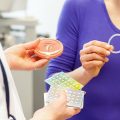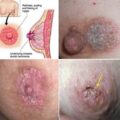The Pill is a tablet you take once a day, there are a few different types of pill. The combined pill contains estrogen and progestin, which stop the ovaries from releasing eggs. It also thickens the cervical mucus, which keeps the sperm from getting to the egg. The so-called mini pill contains only one hormone, a progestin, which offers an alternative to those affected by the hormone estrogen.
Globally in 2019, 44 per cent of women of reproductive age were using a modern method of contraception. This comprises 91 percent of all contraceptive users; the remaining 9 percent were using traditional methods, significant increase in recent years.
How do birth control pills work?
Combination pills work in two ways. First, they prevent your body from ovulating. This means that your ovaries won’t release an egg each month. Second, these pills cause your body to thicken your cervical mucus. This mucus is fluid around your cervix that helps sperm travel to your uterus so it can fertilize an egg. The thickened mucus helps prevent sperm from reaching the uterus.
Progestin-only pills also work in a few different ways. Mainly, they work by thickening your cervical mucus and by thinning your endometrium. Your endometrium is the lining of your uterus where an egg implants after it’s fertilized. If this lining is thinner, it’s harder for an egg to implant in it, which will prevent a pregnancy from growing. In addition, progestin-only pills may prevent ovulation.
Can The Pill Cause Breast Cancer?
Yes, birth control pills can increase your risk of breast cancer. An analysis of data from more than 150,000 women who participated in 54 epidemiologic studies showed that, overall, women who had ever used oral contraceptives had a slight (7%) increase in the relative risk of breast cancer compared with women who had never used oral contraceptives. Women who were currently using oral contraceptives had a 24% increase in risk that did not increase with the duration of use. Risk declined after use of oral contraceptives stopped, and no risk increase was evident by 10 years after use had stopped.
A 2010 analysis of data from the Nurses’ Health Study, which has been following more than 116,000 female nurses who were 24 to 43 years old when they enrolled in the study in 1989, also found that participants who used oral contraceptives had a slight increase in breast cancer risk . However, nearly all of the increased risk was seen among women who took a specific type of oral contraceptive, a “triphasic” pill, in which the dose of hormones is changed in three stages over the course of a woman’s monthly cycle. An elevated risk associated with specific triphasic formulations was also reported in a nested case–control study that used electronic medical records to verify oral contraceptive use.
In 2017, a large prospective Danish study reported breast cancer risks associated with more recent formulations of oral contraceptives. Overall, women who were using or had recently stopped using oral combined hormone contraceptives had a modest (about 20%) increase in the relative risk of breast cancer compared with women who had never used oral contraceptives. The risk increase varied from 0% to 60%, depending on the specific type of oral combined hormone contraceptive. The risk of breast cancer also increased the longer oral contraceptives were used.
How to reduce your risk of breast cancer?
Many factors over the course of a lifetime can influence your breast cancer risk. You can’t change some factors, such as getting older or your family history, but you can help lower your risk of breast cancer by taking care of your health in the following ways
1. Get smart: Know your risk
Prevention has to start with knowledge. Women at an increased risk of breast cancer may need to start screening earlier or be screened more frequently than women of average risk. You might be at an increased risk if you:
- Are overweight or obese or are not physically active
- Have mutations of BRCA-1, BRCA-2 or PALB-2 genes
- Have a family or personal history of breast, colorectal or ovarian cancer
- Began menstrual period before 12 or began menopause after 55
- Have never had children or had your first child after age 30
- Are currently using or have recently used birth control pills
- Have used hormone replacement therapy (with estrogen and progesterone) for more than 10 years
2. Have “The Talk” (no, not that talk)
With Halloween and Thanksgiving on the horizon, take these shared moments to talk with your relatives about your family history of cancer. This is an easy step to take to learn about your cancer risk. Remember to ask about age of diagnosis—your risk increases if your mother was diagnosed with breast or ovarian cancer before age 50.
3. Get active
Staying active is key to staying healthy. Exercising for at least 30 minutes a day, 5 days a week, can make a big impact on your health and is an easy way to reduce your cancer risk. Being physically active can also help you to lower your risk by maintaining a healthy weight.
4. If you smoke, stop. If you drink, limit your intake.
This one’s pretty straightforward. For years we’ve known the health costs that come with smoking. Smoking can weaken the immune system, one of our bodies’ best defenses against cancer, and can damage or change a cell’s DNA, which can lead to the growth of a tumor.
Drinking alcohol is linked to breast and several other cancers. Once ingested, your body breaks it down into a chemical that can damage or change a cell’s DNA, potentially leading to the growth of a tumor. The latest Dietary Guidelines for Americans recommends that if you drink, you limit your consumption to one drink a day for women and two a day for men.
5. Don’t wait for symptoms to appear—get screened
Screening for breast cancer can seem scary, but the sooner it’s found, the sooner it can be treated and the better your odds for remission. From ages 25-39, talk with your health care professional at least once every three years for risk assessment, risk reduction counseling and a clinical breast exam. At age 40, begin getting screened annually.
If you have a personal family history or are at increased risk of breast cancer, all of this could be different for you. Talk to your health care professional about your risk and assess your options together.
6. Check yourself regularly
Know your body so you know when it’s changing. Between regular screenings or exams, pay attention for the following:
- A lump, hard knot or thickening in the breast
- A lump under your arm
- A change in the size or shape of a breast
- Nipple pain, tenderness or discharge, including bleeding
- Itchiness, scales, soreness or rash on the nipple
- A nipple turning inward or inverted
- A change in color and texture (dimpling, puckering or redness)
- A breast that feels warm or swollen
If something feels different or off, don’t be afraid to speak up or ask your health care professional questions.





